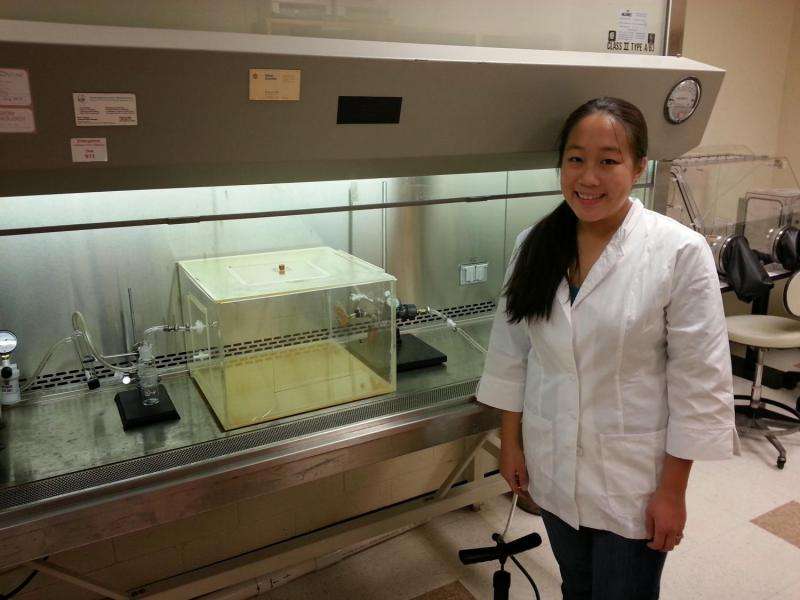Vomiting device offers direct evidence that vomit aerosolizes norovirus-like particles

Using a vomiting device of their creation, researchers at North Carolina State University and Wake Forest University are reporting the first direct evidence that vomiting can aerosolize virus particles similar to human norovirus.
"Epidemiological evidence has pointed to virus aerosolization during vomiting as a likely route for spreading norovirus, and our work here confirms that it's not only possible but probable," says Lee-Ann Jaykus, a professor of food, bioprocessing and nutrition sciences at NC State, co-author of a paper on the work, and director of the USDA-NIFA Food Virology Collaborative initiative (NoroCORE).
"When one person vomits, the aerosolized virus particles can get into another person's mouth and, if swallowed, can lead to infection," Jaykus says. "But those airborne particles could also land on nearby surfaces like tables and door handles, causing environmental contamination. And norovirus can hang around for weeks, so anyone that touches that table and then puts their hand to their mouth could be at risk for infection."
The research team developed and used a vomiting device that allowed them to precisely control the volume, viscosity and pressure of simulated vomiting. (More information on the vomiting device is available here.)
The researchers contaminated fake vomit with a virus called the MS2 bacteriophage - a commonly-used proxy for norovirus that does not harm humans - and used the vomiting device to determine whether the virus was bioaerosolized during a simulated vomiting event. The researchers also wanted to know, if the virus was aerosolized, how much of the virus was becoming airborne.
"In terms of overall percentage, not a lot of the virus is aerosolized," says Francis de los Reyes III, a professor of civil, construction and environmental engineering at NC State who is corresponding author of the paper. "But in absolute terms, it is a lot compared to the amount of virus needed to cause infection."
"At most, only 0.02 percent of the total virus in the vomit was aerosolized," Jaykus says. "But that can still amount to thousands of virus particles - more than enough to infect other people."
Future directions for the work include assessing how long virus particles can remain airborne, and how far they may be able to travel in the air.
More information: The paper, "Aerosolization of a Human Norovirus Surrogate, Bacteriophage MS2, During Simulated Vomiting," will be published August 19 in the journal PLOS ONE.

















